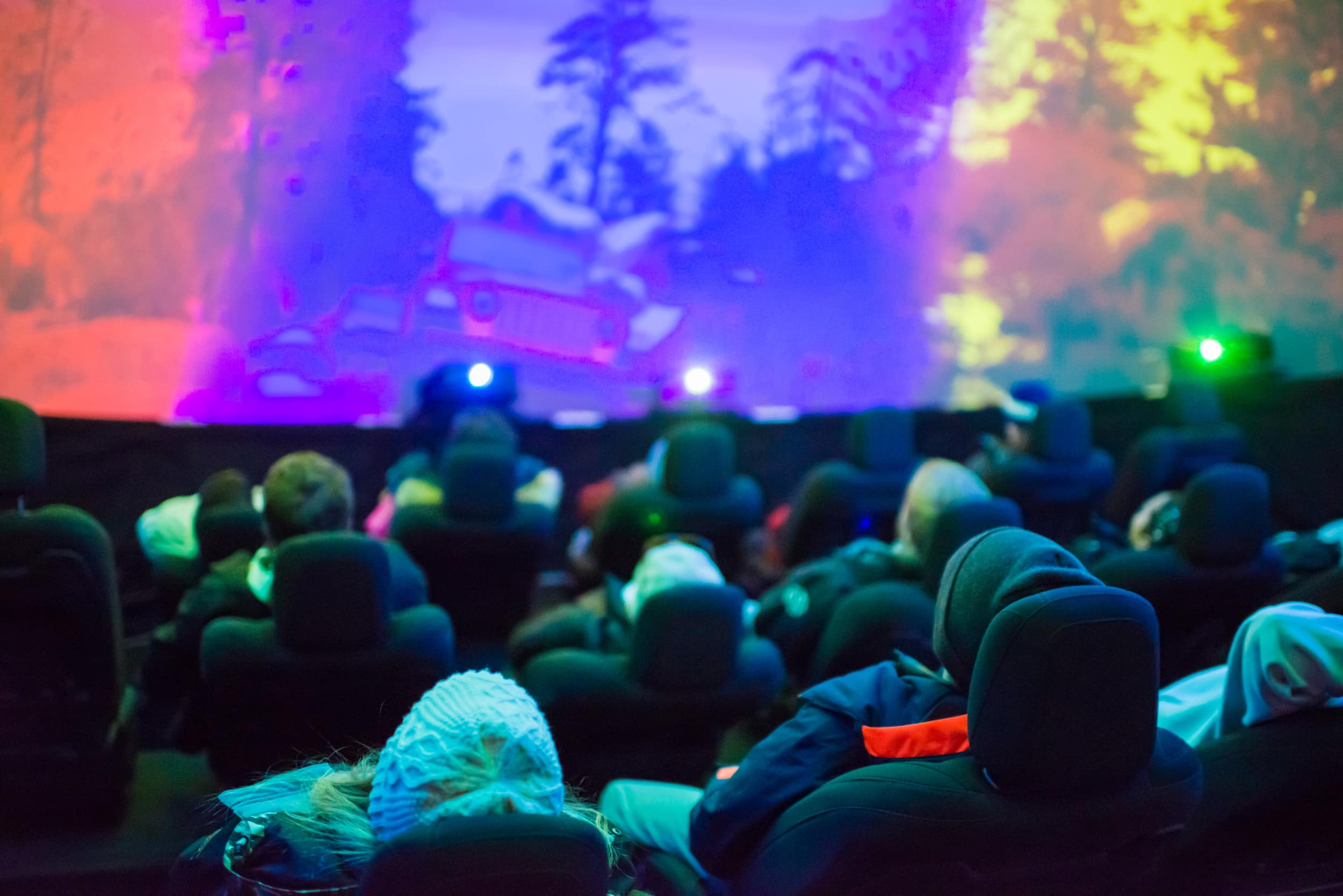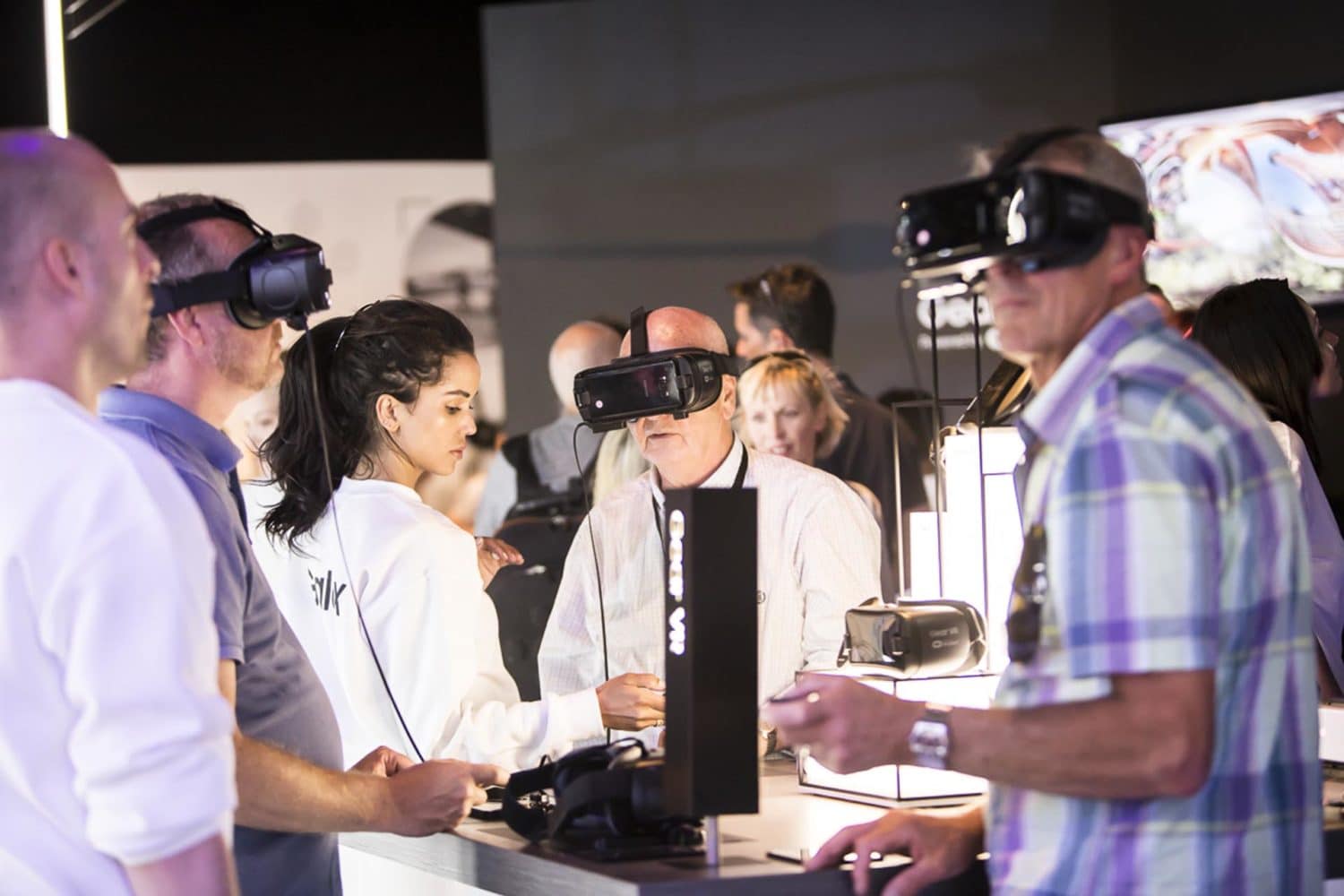The Role of Immersive Technology in Modern Experiential Marketing
April 2024

April 2024

First of all, what does immersive technology actually consist of?
To briefly explain what immersive does, it creates a ‘lived-in’ experience for your consumers.
Immersive technology today primarily consists of virtual reality, augmented reality, and mixed reality.
They’re not just buzzwords. This technology can be what it takes to really ‘wow’ your audiences.
In fact, these three distinct technologies could take your experiential campaigns to the next level and engage consumers like never before.
Let’s look at each of them a little more closely…


VR creates a completely simulated environment in which the user can interact in a seemingly ‘real way’.
This is achieved through VR headsets or multi-projected environments, engaging users in a digital world where they can move around and interact with virtual features.
AR overlays digital elements like images, animations, and sounds onto the physical world.
Unlike VR, which creates a fully immersive digital environment, AR enhances the real world with digital components.
This technology is accessible through devices equipped with cameras and GPS, such as smartphones and tablets. Common applications include photo filters on social platforms and interactive games like Pokémon Go, blending digital objects with the user’s physical surroundings.


MR combines elements of both VR and AR to create a new environment where physical and digital objects co-exist and interact in real-time. This means users can see and interact with the real world while simultaneously seeing and interacting with a digital environment.
MR offers a more integrated and interactive experience, bridging the gap between the fully immersive virtual world of VR and the enhanced real-world experience of AR.
Each of these immersive technologies plays a unique role in modern experiential marketing, bringing new ways for your brand to engage with consumers by providing more interactive and memorable experiences.
In our digital age, it’s becoming harder and harder to grab someone’s attention.
And as for holding their attention – well that’s another challenge entirely.
This is where immersive technology can make a huge impact.
It’s not just about showing your audience something new but bringing them into your world and making them part of the story.
And when customers become part of the narrative, they’re no longer passive observers. They become participants, advocates, and even influencers.
The world of immersive technology as we know it is expanding, with new trends in AR and VR becoming more accessible and affordable.
This means a huge surge in modern applications, like virtual try-ons in fashion retail to interactive, gamified learning experiences in education.
But it’s not just about what these technologies can do; it’s about how creatively we can apply them.
Emerging trends in immersive technology are reshaping marketing strategies across the globe.
Personalisation through AI can be used to tailor immersive experiences to an individual user. AI can accurately analyse data from a user’s interactions to optimise and personalise the VR or AR content in real-time, enhancing the user’s engagement and connection with your brand.
Interactive digital signage can now incorporate touch, gesture, and facial recognition technologies. But what does this mean for marketers?
This kind of tech enables more interactive and personalised user experiences. By having the capability and insights to adapt marketing messages based on the audience in real time, you can deliver more targeted advertising that improves your customer engagement and connection with your brand!
Retailers have recently experimented with XR in-store to transform traditional shopping into something that merges with the digital world. XR stores combine elements of both AR and VR to create immersive retail environments where customers can interact with products virtually. Ikea Kreativ is a great example when customers can plan their room design virtually and place Ikea products in their replica room to see what they would look like.
These trends show us the potential of immersive technology in future marketing, where the digital and physical realms blend to create engaging and memorable consumer experiences.
Here are some standout examples of how brands are leveraging these technologies:

As a sponsor of the Winter x Games, Jeep wanted to get thousands of targeted consumers behind the wheel of a Jeep while educating, exciting, and ultimately driving sales leads for dealers.
Purity created the Jeep “Champion of Adventure” experience. Fans stepped inside a 30-foot geodesic dome and hopped into a virtual Jeep immersive test drive. Once nestled into the heated seat of the legendary Jeep Wrangler, an immersive 4-D, 4-minute mountain drive adventure began. With 360-degree panoramic cinematic film, blowing wind and the scents and sounds of nature.
The “Champion of Adventure” activation was the most-awarded auto-activation of 2020 and saw a 635% increase in leads vs two years ago.
Purity was briefed to design an interactive booth that enabled audiences to step into a world where judgement is left behind and self-expression reigns supreme.
The Malibu universe welcomes you to unplug, live in the moment, and do whatever brings you joy. Embrace the mantra of “Do Whatever Tastes Good” and let your inhibitions fly away like the ocean breeze.
In the Malibu Confession Booth, up to four friends have the chance to answer confessional questions, strike a pose for an epic photo, have a mini-disco, and receive a printed keepsake of your unforgettable experience. As a special touch,
Purity has created a personalised GIF capturing their best moments, ensuring a lasting memento of the experience.
Purity’s creative and production team oversaw all aspects of the design and build. Our team of brand ambassadors are trained and primed in the Malibu brand world and ready to take audiences through the experience – because of the popularity of the experience, two booths have been built – one festival-ready and the second for smaller locations such as on-trade city centre bars.

These examples highlight the vast potential of immersive technologies in creating engaging, interactive marketing campaigns that captivate audiences. As we move forward, the key for brands will be to creatively integrate these technologies in ways that not only achieve value for brands but also more importantly capture the audience’s attention.